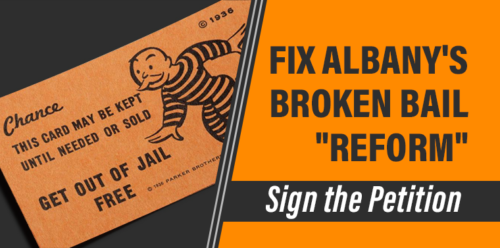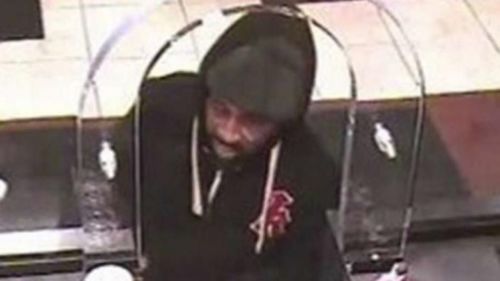Bail Reform: Proceed With Caution
Photo courtesy: Alpha Stock Images
January 2020 ushered in a unique new law in New York State that abolished cash bail for defendants arrested for non-violent crimes. Activists in the bail reform movement called it landmark legislation that stops judges from locking up the poor while they await trial simply because they can’t afford bail.
Others, many in law enforcement, are calling it “a disgrace” and say the politicians forgot to consider a most important point: public safety.
Lawmakers nationwide are watching what happens in New York as bail reform movements press forward in their states. So far it isn’t pretty.
New York Judges are not allowed to deviate from automatic release for those accused of a long list of misdemeanors and non-violent crimes. They cannot consider a defendant’s past record, even if it included multiple violent crimes. Judges may only rule on the latest misdemeanor or non-violent charge that brought the arrestee to the courtroom. Perhaps most worrisome is what the New York legislature considers to be a non-violent crime. It would be laughable if it weren’t so deadly serious.

There’s a Petition to Change New York’s New Bail Law – Photo: NYSenate.gov
Example: Tiffany Harris started the New Year viciously slapping Jewish women in Brooklyn while yelling horrible anti-Semitic curses. The new revolving door justice system mandated her release. A day later Harris was arrested for randomly slugging a woman in the face while two children watched in horror. Harris was released again. She eventually wound up in a psych ward.
Example: Gerod Woodbury was arrested in early January for robbing four banks in Manhattan. He passed a note to each teller who, in turn, gave him cash. Because Woodbury did not brandish a weapon his alleged grand larceny was considered a non-violent crime and the judge had to let him loose. Police say Woodbury promptly robbed two more banks.
Example: Eugene Webb is known to police as an aggressive, homeless panhandler. On January 10th police say he slugged a woman so hard she lost a tooth. Hours later he violently attacked another woman. Despite a rap sheet showing four other arrests the judge had to release him back to the streets.

Gerod Woodbury in Action According to Police – courtesy DCPI
Washington, DC dropped cash bail back in the early 90’s, but reformers figured they should keep track of those they released. D.C. now spends $65 million annually on a pre-trial program that supervises 14,000 people. It is not perfect. A suspect accused of assaulting a police officer got a no-bail release and two days later he was charged in a fatal stabbing.
Since when is brutally attacking people, robbing a bank or assaulting a police officer a non-violent crime? Tell that to the frightened bank tellers, the Jewish women or the officer.
There isn’t enough space here to list each egregious no-bail case I found in places where this experiment is playing out.
There is another unintended consequence of current bail reform. In states with designated drug courts a defendant is brought in and given the choice of jail or a rehabilitation program. Under a no-bail system these defendants don’t get a chance to choose rehab, they are automatically released. The mentally ill immediately go back to the streets, without treatment, likely as not to reoffend.
Locking up suspects on minor charges just because they cannot afford bail should not be the norm. It is a shame that policy was ever in place because – are you ready for this? – most people currently held in state and local jails have not been convicted of any crime. The Prison Policy Initiative reports over 540 thousand people are currently imprisoned awaiting trial in local lockups. Fifteen thousand of them are minors, 9,000 are also awaiting psychiatric evaluation or treatment.

PPI.org Keeps Track of U.S. Prison Populations
Bail has traditionally been thought of as a way to ensure the arrested person doesn’t flee and returns for trial. But shouldn’t bail also be carefully considered as a way to keep the public safe from habitually dangerous people? Taking away judicial discretion is just foolish. So is ignoring a defendant’s violent past or pretending an assault or robbery isn’t a violent crime.
More than 40 states are currently considering bail reform measures. It’s the latest trend in criminal justice circles, and many would agree it is long overdue. Let’s just hope no state follows New York’s lead.

###
Reader Dan Klein writes:
I read your column today and I believe you missed a huge part of this bail reform story. The University of New Mexico studied bail reform since it’s implementation in 2016. This report came out in November of 2019. Bail reform works. I think the problem is when isolated cases are brought forward making the public believe this is the norm. It is not. I would say that NY is the same way. Nothing will ever be a perfect fit, humans and life are random and because of that we will never have a perfect system. But that doesn’t mean that the system isn’t working. In New Mexico it clearly is.
And remember this, before bail reform, we had more incidents of people posting bail and reoffending. That fact is sorely missing from almost every “sky is falling” column that I read on bail reform. Citizens were worse off under the old system.
I hope you do a follow up on this issue. Facts are boring, they certainly aren’t sensational, but I have read you for years and I believe you are always interested in the facts.
For every Tiffany Harris there are 100 others who did not reoffend. We never mention them.
One question, Gerod Woodbury was robbing banks. That’s a federal crime, so why was he on state charges? The feds implemented this bail reform years ago. Their studies also show it works and works well. So I wonder why Woodbury wasn’t in federal custody.
Sunny in Albuquerque
Dan Klein
This was not a column to discuss all those who benefit or behave under no-cash bail policies. It was to enlighten citizens about the untenable restrictions some of these new bail laws put on judges — the final arbiters on which defendants deserve to be released to home and those who present a danger to the public.
Please read my comment to the reader below…..~DD
Reader Spurgeon Kennedy writes:
Your recent article on bail reform was quite unfair regarding bail decision-making in Washington DC. True, the system is not “perfect,” yet perfection is not what the rule of bail requires. As the Supreme Court stated in 1952, risk is inherent in a bail decision. The idea is to measure and manage that risk consistent with public safety and a defendant’s right to reasonable terms of release.
Over the past five years, the DC bail system has released 94 percent of defendants nonfinancially while seeing appearance rates between 88-91 percent and arrest free rates of 88-89 percent. The rate of rearrests on violent crimes year in and year out has been less than one percent. These are the measures of an imperfect but highly functioning bail system. Other jurisdictions (such as New Jersey, Kentucky. Cook County and Allegheny County) are seeing similar results as they move away from money based systems.
In the future, please take a moment to learn about DC’s bail system before you label it. I’m sure the current leadership there would be happy to enlighten you.
This column was not about what is going right with the District of Columbia’s bail reform system. It was about legislation that strips away the ability of a judge to rule on each individual case. Blanket bail reform laws like the one that passed in New York – with its long list of crimes for which no cash bail is permitted – circumvent what I believe is the true spirit of reform. It shouldn’t be to let EVERYONE out pending trial with no cash bail. It should be to allow those who have committed minor, non-violent infractions to go home to await trial. If a defendant has a record of past violent acts a judge should be allowed to hold them in custody or demand a cash bail. This is my opinion. ~DD
Reader Dave Imbriaco@DaveImbSays writes:
What’s a worse problem: guilty people getting out more easily or the fact that innocent people’s (or even petty, low-level criminals) lives were being ruined by the onerous bail system that existed? The former may draw more clicks, but the latter is far more widespread.
DD replies to Dave:
I think you missed the point here, Dave. When dangerous, sometimes habitual criminals or the mentally ill are sent back to the streets the public (like you) is in danger.
Reader Richard L Jones@RichardLJones11 writes:
Time for cops to strike against the idiot politicians
Reader Timothy Hopkins writes:
Releasing violent criminals back on the street depending on their good faith to appear for a future trial is a disaster. When these felons commit more crimes those in authority who promoted and enacted this should be charged as accessories and held personally responsible.
Reader J. Dalton Greene writes:
J
LETS GET SERIOUS—-overcrowding is the #1 issue.
SOLUTION: states need to budget a position of Federal Prosecutor.
THEN: states must change their local laws that mandate ALL GUN CRIMES are Federal crimes, prosecuted by Fed prosecutor, sentenced in a Federal court to a Federal prison.
#2—-Federal prison system needs to build 1 Million prison cells in the Arizona desert, high rise buildings will work.
EVERY PERSON SENTENCED TO LIFE IN JAIL——-must be shipped out to the Federal prison——-removed from state prisons——-FREES UP CELLS FOR STATE CRIMES AND PRISONERS.
#3—any US citizen arrested for Possession of Drugs should NEVER serve time in a prison
WHAT NY IS DOING WILL FAIL—-don’t need a study to understand LOGIC
Reader Jim Reynolds writes:
Diane, we are ever so fortunate that you continue to be “The Voice of Reason” in journalism. Don’t ever change!!
Reader Dave Imbriaco writes:
What’s a worse problem: guilty people getting out more easily or the fact that innocent people’s (or even petty, low-level criminals) lives were being ruined by the onerous bail system that existed? The former may draw more clicks, but the latter is far more widespread.
DD replies:
My opinion? One innocent person being victimized by someone who should be in lockup is one too many.
Reader Richard Heydt writes:
I think the way NYC is doing this is wrong…only looking at the current violation. There should be a part that looks at previous crimes, for the judge to decide whether to hold someone over or not on bail. The revolving door idea sounds good, until someone dies from it. Will the victims relative’s be able to sue the city or state because the perp was released.
Reader Ted Weiland writes:
Bail Period: Proceed with Caution!
»…The contradiction between the Sixth Amendment’s provision for speedy trials and the Eighth Amendment’s provision for bail when a speedy trial is unlikely is another inherent flaw in the United States Constitution. When government is based upon Yahweh’s5 law, trials and punishment are meted out swiftly, if not immediately, and bail (like prison) is superfluous.
«The only downside to Yahweh’s no-bail system is that innocent men will occasionally incur short-term incarcerations while awaiting trial. Better a few innocent men suffer temporary incarceration than many victims suffer at the hand of criminals freed on bail….»
For more, see online Chapter 17 «Amendment 8: Bail, Fines, and Cruel and Unusual Punishments» of «Bible Law vs. the United States Constitution: The Christian Perspective» at http://www.bibleversusconstitution.org/BlvcOn…
Reader J. Dalton Greene writes:
LETS GET SERIOUS—-overcrowding is the #1 issue.
SOLUTION: states need to budget a position of Federal Prosecutor.
THEN: states must change their local laws that mandate ALL GUN CRIMES are Federal crimes, prosecuted by Fed prosecutor, sentenced in a Federal court to a Federal prison.
#2—-Federal prison system needs to build 1 Million prison cells in the Arizona desert, high rise buildings will work.
EVERY PERSON SENTENCED TO LIFE IN JAIL——-must be shipped out to the Federal prison——-removed from state prisons——-FREES UP CELLS FOR STATE CRIMES AND PRISONERS.
#3—any US citizen arrested for Possession of Drugs should NEVER serve time in a prison
WHAT NY IS DOING WILL FAIL—-don’t need a study to understand LOGIC
Reader Timothy Hopkins writes:
Releasing violent criminals back on the street depending on their good faith to appear for a future trial is a disaster. When these felons commit more crimes those in authority who promoted and enacted this should be charged as accessories and held personally responsible.